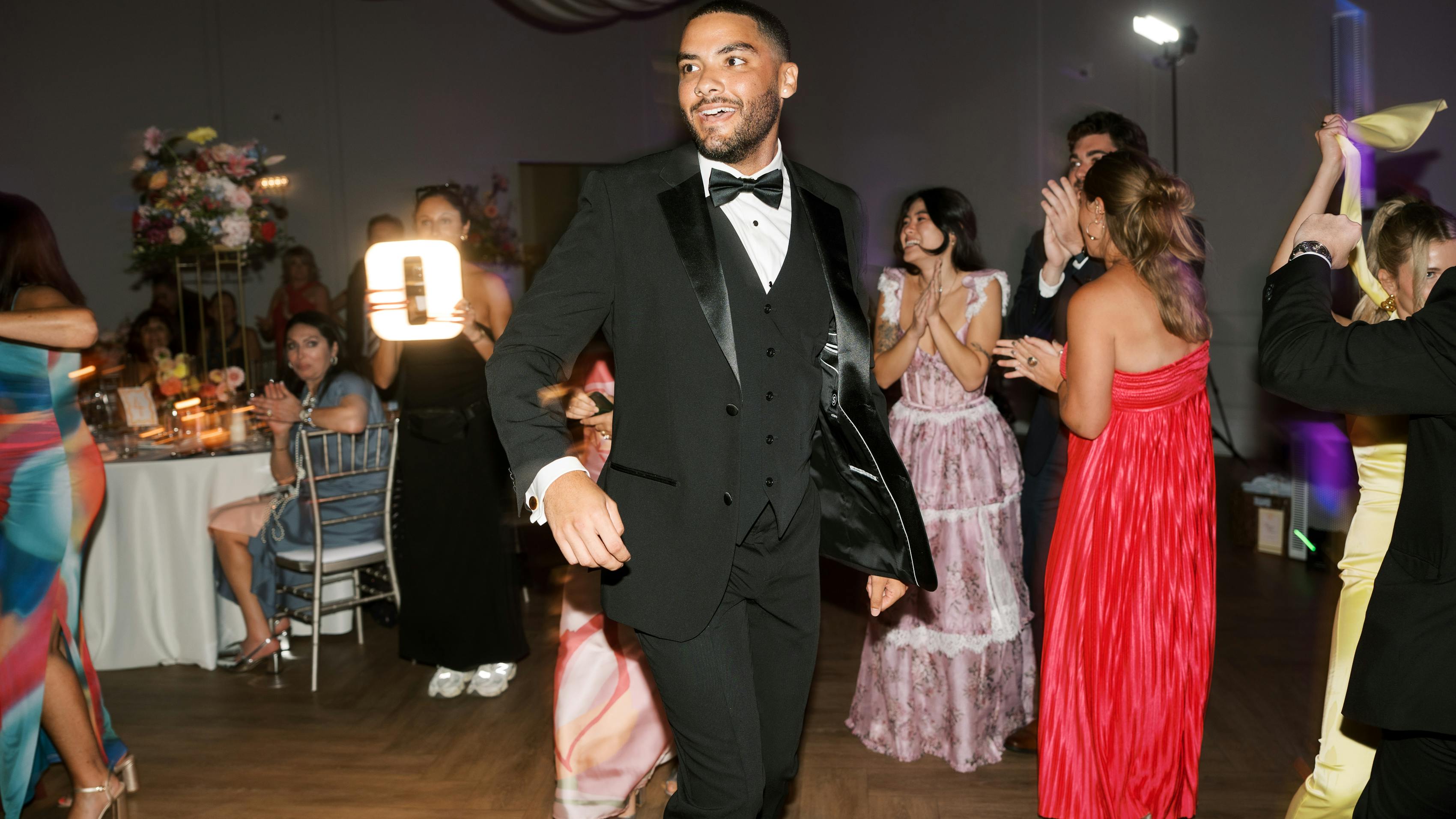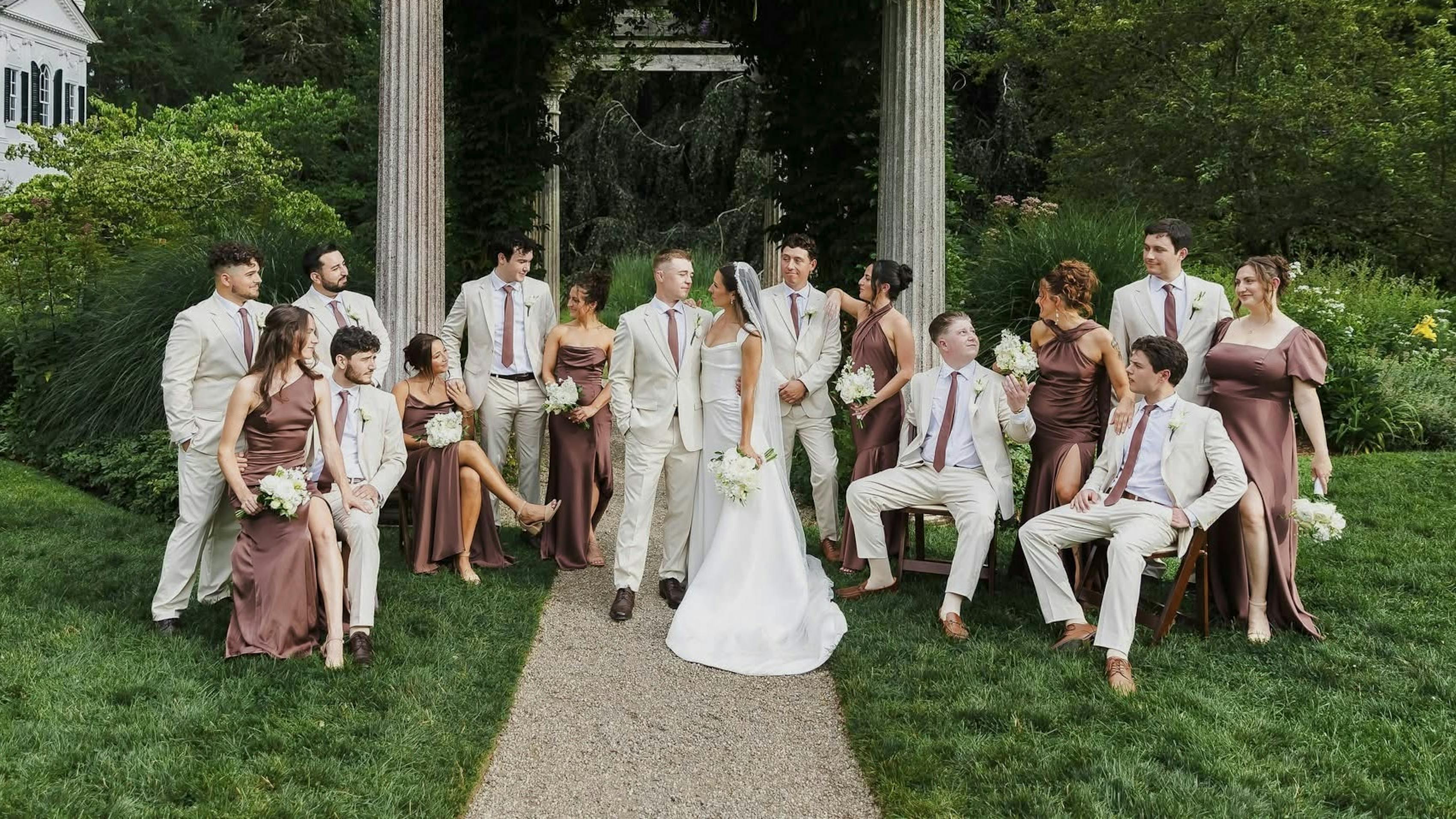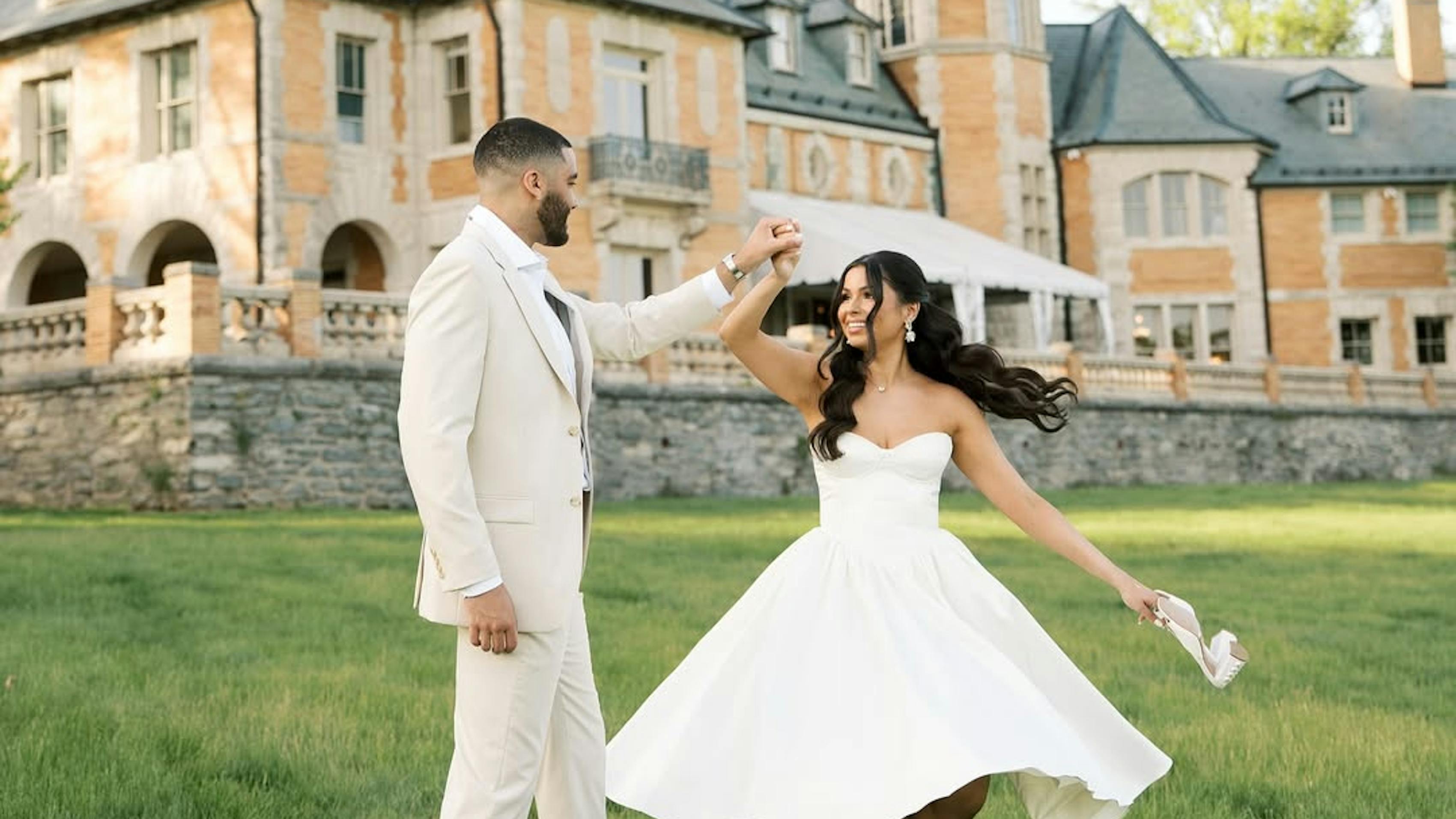What Is the Difference Between Business Casual and Business Professional Attire?
Published on May 9, 2024 | Updated May 28, 2025
By Lily Ertischek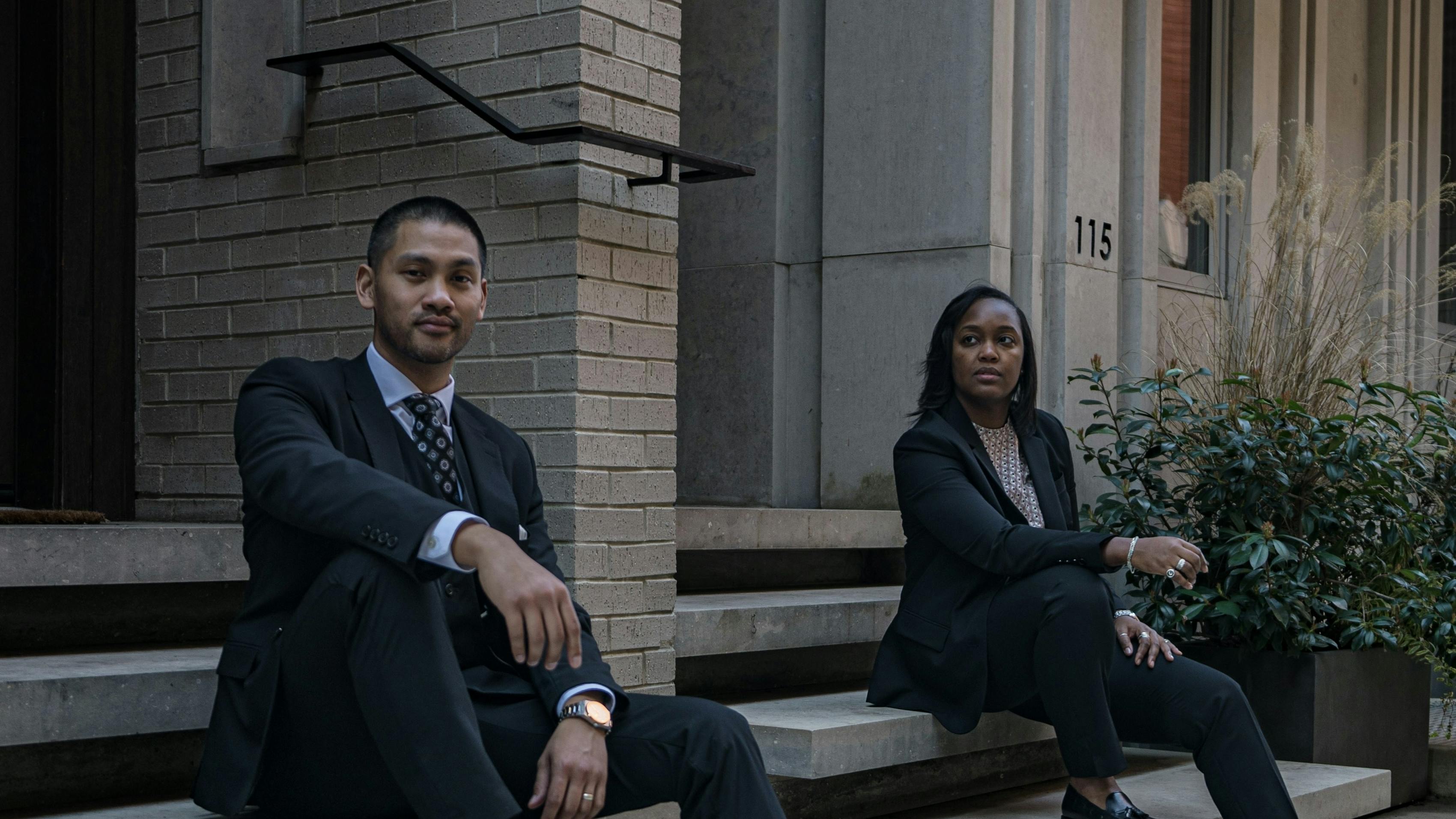
What Is the Difference: Business Casual vs. Business Professional Attire?
It's an age-old question: what should you wear to work? It can be a bit of a head-scratcher, especially when you're faced with dress codes like business casual and business professional. While they share some similarities, they each have distinct characteristics that set them apart. Understanding the distinction between the two can save you from any awkward outfit mishaps at the office.
In this guide, we'll explore the nuances of business casual vs. business professional attire, outlining the key elements of each dress code and offering tips on how to dress appropriately for various work environments. Whether you're preparing for a job interview, a client meeting, or simply want to refresh your work wardrobe, mastering the distinctions between business casual and business professional attire will ensure you're always dressed for success.
Key Takeaways
- Dressing confidently in business casual and business professional attire requires finding a balance between professionalism and personal style.
- Reviewing the employee handbook and observing coworkers can help determine what's appropriate for the office dress code.
- Accessorizing with items like pocket squares, cufflinks, or tie bars allows for personal expression while maintaining professionalism.
- The primary difference between business casual vs. business professional attire lies in formality, where business casual attire is more relaxed and business professional attire is more formal.
What Is Business Casual Attire?
Business casual attire strikes a balance between professional and relaxed, offering a polished yet comfortable look suitable for a variety of work environments. This dress code allows for more flexibility and personal expression compared to traditional business professional attire. Common colors for business casual attire include neutrals like black, navy, gray, and beige, along with muted tones and subtle patterns. While the overall aesthetic should still be professional, business casual attire often incorporates elements of casual wear, such as knit sweaters, chinos, and blouses, allowing for a more relaxed and approachable appearance.
Overall, the key to mastering business casual attire is striking the right balance between professionalism and comfort. While there's room for individual style, it's important to ensure that your outfit still conveys a sense of professionalism and respect for the workplace environment.
Business Casual Attire for Men
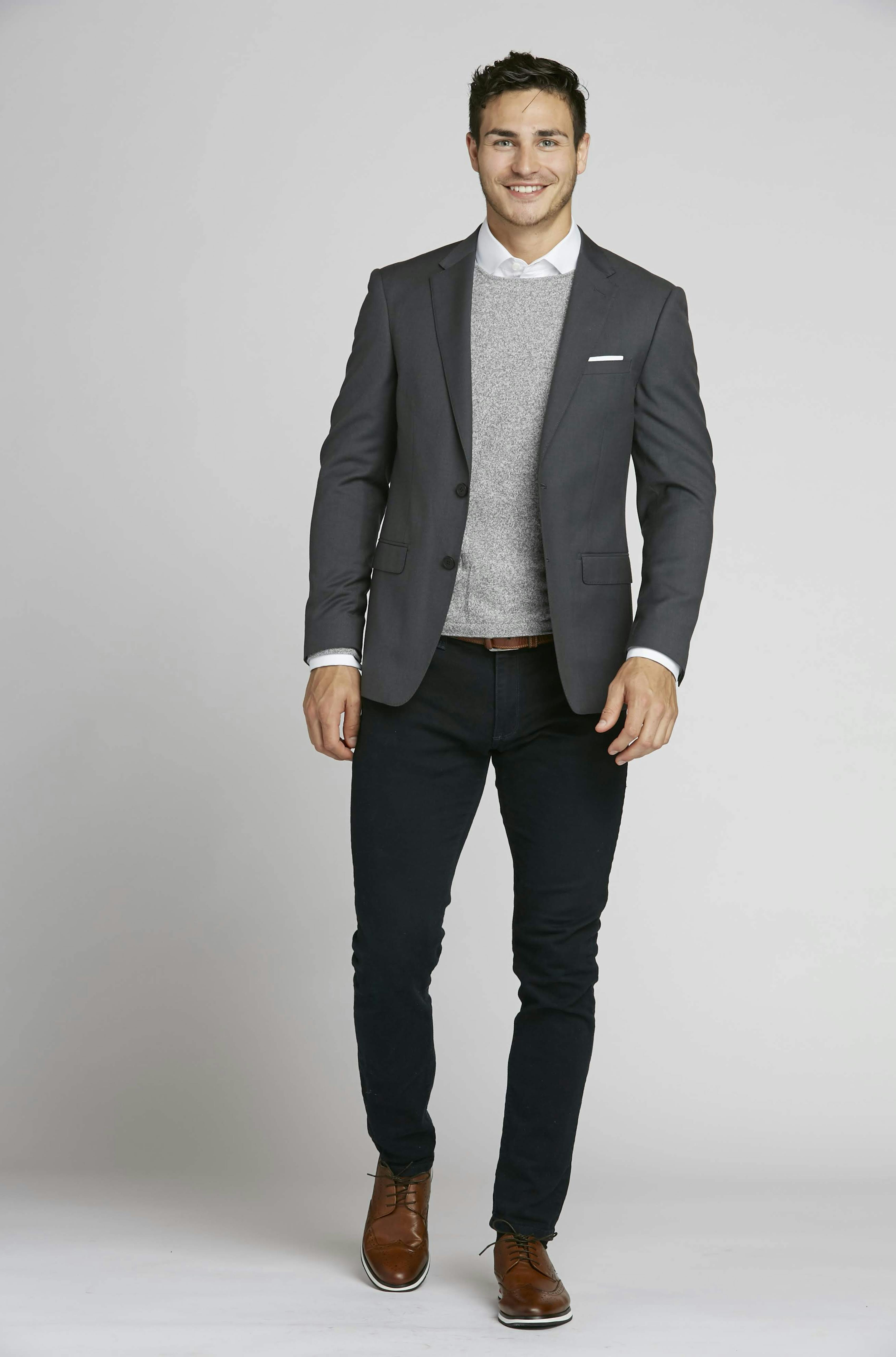
When it comes to dressing for the job, business casual attire for men is all about keeping it relaxed while still looking sharp. So, whether you're ditching the suit jacket or swapping out your dress shoes for some sleek loafers, you can rock that laid-back but polished look that's perfect for the workplace.
- Suit: In a business casual setting, wearing a full men’s suit is generally not required. However, suit separates can still be incorporated for a more elevated look. Opt for dress slacks in neutral colors like black, navy, or gray, and pair them with a coordinating blazer if desired. This allows you to maintain a tailored and sophisticated appearance without the formality of a full suit.
- Shirt: Button-down shirts are a staple of business casual attire for men. Choose shirts in classic colors like white, light blue, or subtle patterns like stripes or checks. The shirt should fit well and be neatly pressed for a professional appearance. Avoid overly casual styles like t-shirts or polo shirts unless they are explicitly allowed in your workplace dress code.
- Footwear: Footwear should be polished and appropriate for the workplace. Opt for dress shoes such as Oxfords, loafers, or Derby shoes in leather or suede materials. For some offices, avoid sneakers or overly casual shoes, as they can detract from the overall professional look of your outfit. Depending on the environment of your workplace, these more dressed-down shoes can also help balance the business with the casual.
- Optional Layers: One of the benefits of business casual attire is the ability to incorporate optional layers for added style and comfort. Consider layering with a sweater, cardigan, or vest for a more relaxed yet put-together look. Mixing and matching suit separates allows for versatility in your wardrobe, allowing you to create multiple outfits with just a few key pieces.
- Accessories: Accessories can add a finishing touch to your business casual ensemble. Opt for a belt that matches your shoes in color and material for a cohesive look. In most cases, business casual attire doesn’t call for neckwear like ties, but you can add a touch of flair with a pocket square for added personality. Keep jewelry minimal and professional, avoiding anything too flashy or distracting.
Business Casual Attire for Women

When it comes to dressing for work, business casual attire for women is like the best of both worlds – it's stylish and comfy at the same time. It's less strict than traditional professional dress codes, giving you the freedom to show off your personal style while still looking put together for the office. Whether you're rocking a tailored blazer or a chic blouse, you can feel confident knowing you're nailing that polished yet relaxed vibe perfect for the workplace.
- Tops: When it comes to tops, women have a variety of options for business casual attire. Blouses, button-down shirts, and tailored tops in solid colors or subtle patterns are all suitable choices. Tops should fit well and be appropriate for the workplace, with sleeves that provide coverage and necklines that are not too revealing.
- Bottoms: For bottoms, women can choose from a range of options, including dress slacks, trousers, or tailored pants in neutral colors like black, navy, or gray. Skirts in appropriate lengths, typically falling at or below the knee, are also acceptable. Avoid overly casual styles like jeans or shorts, as well as anything too tight or form-fitting.
- Dresses: Dresses can also be a stylish and versatile option for business casual attire. Choose dresses in classic silhouettes and modest styles, such as A-line or sheath dresses. Dresses should be of appropriate length and fit well, with hemlines that are not too short or revealing. Patterns and prints are acceptable as long as they are not too loud or distracting.
- Footwear: Footwear should be polished and appropriate for the workplace. Opt for closed-toe shoes such as pumps, flats, or loafers in leather or suede materials. Avoid overly casual styles like sneakers or sandals, as well as anything too high or impractical for all-day wear.
- Optional Layers: Optional layers can add depth and interest to your business casual ensemble. Consider layering with a blazer, cardigan, or sweater for added warmth and style. Blazers in classic colors like black, navy, or gray are versatile and can easily elevate your look. Sweaters or cardigans in lightweight materials are also suitable for layering and can add a touch of sophistication to your outfit.
- Accessories: Accessories can add the finishing touch to your business casual look. Opt for simple and understated jewelry such as stud earrings, a delicate necklace, or a classic watch. Belts can also add definition to your waistline and pull your outfit together. Keep accessories professional and subdued, avoiding pieces that may be too loud or distracting.
What Is Business Professional Attire?
Business professional attire is a formal dress code typically reserved for corporate settings, professional meetings, and other formal business occasions. It's the pinnacle of workplace dress codes, exuding a sense of professionalism, authority, and sophistication. This attire is appropriate for environments where a strict and polished appearance is required, like boardrooms, client meetings, or job interviews.
Colors are usually on the classic side – think black, navy, or gray – and fabrics are top-notch, like wool or cotton blends. Patterns are kept minimal and conservative, with options like pinstripes, subtle checks, or solid colors dominating the wardrobe.
Overall, business professional attire is about projecting a professional image and commanding respect in the workplace. It's about dressing the part of a confident and capable professional, ready to tackle any challenges that come your way.
Business Professional Attire for Men
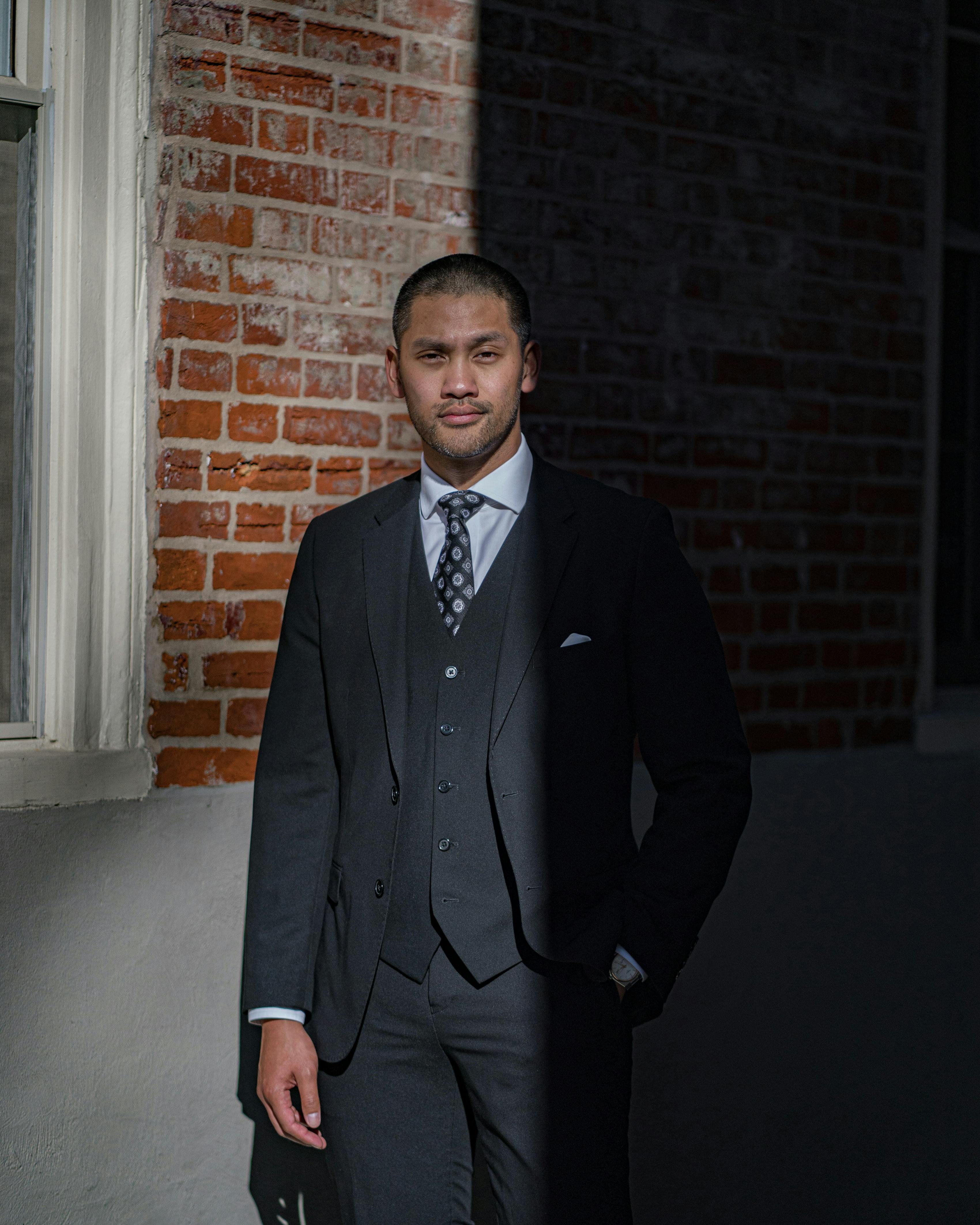
When it comes to dressing up for serious business, business professional attire for men is where it's at. The goal is to look sharp, sophisticated, and professional. This is the kind of outfit you'd wear for those big meetings, client pitches, or any other formal business.
- Suit: A well-fitted suit is the cornerstone of business professional attire for men. Opt for a single-breasted or double-breasted suit in classic colors like black, navy, or charcoal gray. The suit jacket should fit comfortably and be tailored to accentuate the shoulders and waist.
- Shirt: A crisp white dress shirt is a must-have for business professional attire. Choose a shirt with a pointed collar and long sleeves for a classic and polished look. Ensure that the shirt is well-pressed and fits properly, with sleeves that extend just past the wrist and a collar that sits snugly against the neck.
- Tie: A tie adds a finishing touch to the business professional ensemble, conveying a sense of formality and attention to detail. Opt for a silk tie in a solid color or subtle pattern that complements the suit and shirt. The tie should be neatly knotted and hang just above the belt buckle for a polished appearance.
- Footwear: Dress shoes are essential for completing the business professional look. Choose a pair of leather Oxford or Derby shoes in black or brown, depending on the color of your suit. Ensure that the shoes are well-polished and free from scuffs or scratches, as they are a key element of your overall appearance.
- Accessories: Accessories should be kept to a minimum in business professional attire, focusing on classic and understated pieces that add a touch of refinement. A simple leather belt that matches the color of your shoes is essential for a cohesive look. Consider adding a subtle pocket square or a pair of cufflinks for a touch of personality, but avoid anything too flashy or distracting.
Business Professional Attire for Women
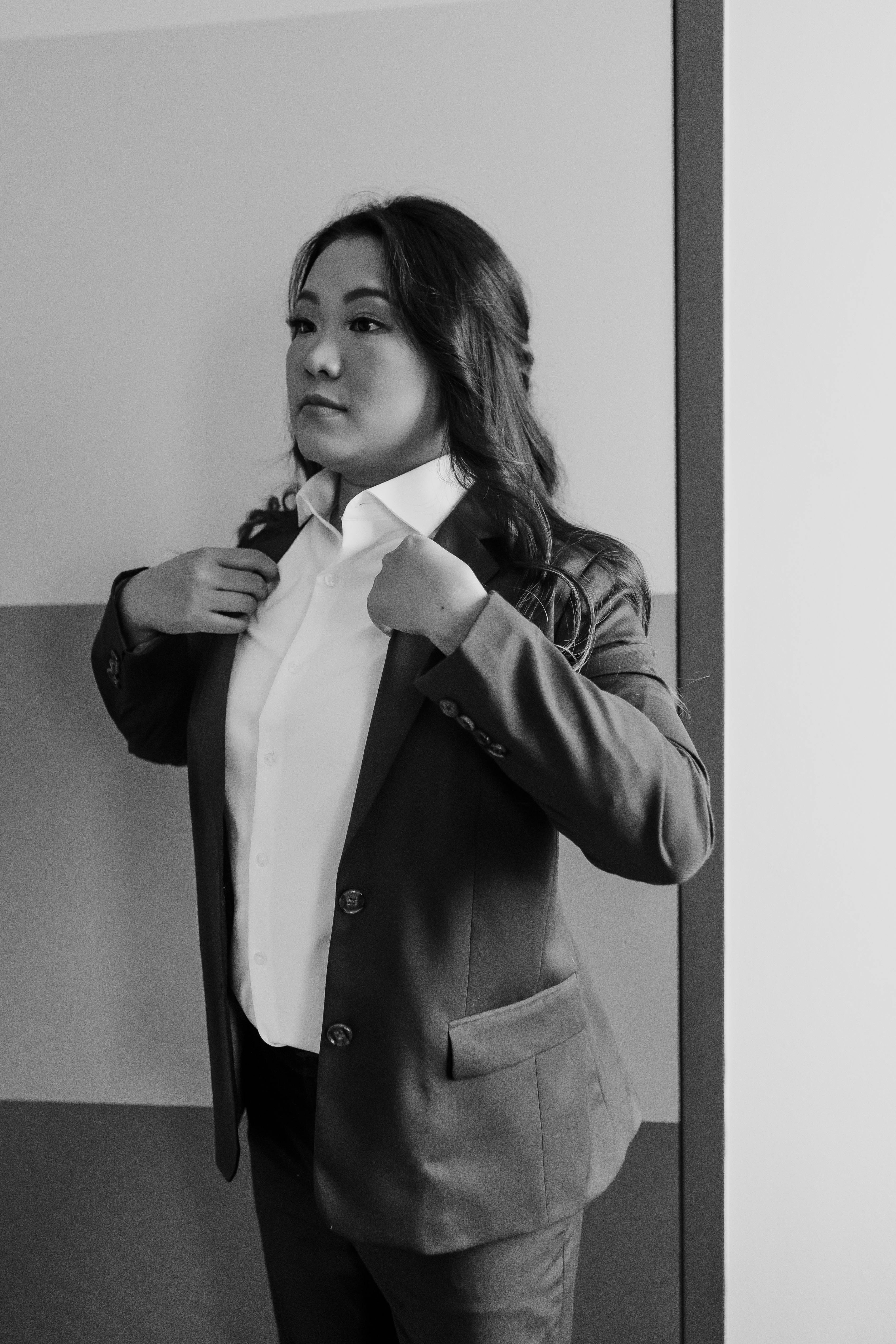
Business professional attire for women projects confidence, competence, and professionalism in the workplace. It’s a range of polished and tailored garments suitable for formal business settings, client meetings, and corporate events.
- Pantsuit: A women’s suit, often called a power suit, is a classic choice for women's business professional attire. Opt for a well-tailored suit jacket paired with matching dress pants in classic colors like black, navy, or charcoal gray. The pants should fit comfortably and have a straight or slightly tapered leg for a polished look.
- Dress: Dresses are another stylish option for women's business professional attire. Choose dresses in structured silhouettes and modest lengths, typically falling at or below the knee. Classic styles like sheath or A-line dresses are ideal for a professional setting, while solid colors or subtle patterns add interest without being too distracting.
- Tops: Tops for business professional attire should be tailored and sophisticated. Opt for button-down shirts, blouses, or tailored tops in classic colors like white, light blue, or pastels. Ensure that tops fit well and are free from wrinkles or creases, with sleeves that provide coverage and necklines that are not too revealing.
- Footwear: Footwear should be polished and appropriate for the workplace. Opt for closed-toe shoes such as pumps, loafers, or flats in neutral colors like black, brown, or navy. Heel height should be moderate and comfortable for all-day wear, with a focus on professionalism and comfort.
- Accessories: Accessorizing a women’s suit is the finishing touch to women's business professional attire, adding a touch of sophistication and personality to the ensemble. Reach for classic and understated pieces such as a structured handbag, simple jewelry like stud earrings or a delicate necklace, and a tailored belt to define the waist. Avoid anything too flashy or distracting, because the focus should be on projecting a polished image in the workplace.
What Are the Differences Between Business Casual vs. Business Professional Attire?
The difference between business casual and business professional attire is similar to comparing formal vs. semi-formal attire. Business professional attire leans toward the formal end, characterized by structured suits or dresses in classic styles and colors, ideal for formal business settings and corporate events. In contrast, business casual attire is more laid-back, allowing for separates like dress slacks or skirts paired with blouses or button-down shirts, suitable for semi-formal occasions or workplaces with a less rigid dress code. So, whether you're going for the full-on CEO look or aiming for that smart-casual vibe, understanding these dress codes helps you nail the right style for any professional setting.
Business Attire FAQs
What is not appropriate business attire?
Inappropriate business attire includes items like flip flops, t-shirts, shorts, workout clothes, ripped or torn garments, and anything overly casual or revealing. These pieces are not suitable for professional environments as they can undermine your credibility and professionalism. Instead, opt for clothing that is neat, polished, and appropriate for the workplace, ensuring that your attire reflects respect for yourself and others in the professional setting.
Do you need to wear a tie for business professional attire?
Yes, business professional attire typically requires wearing a necktie. The tie is a finishing touch to the look, conveying professionalism and attention to detail. When choosing a tie, opt for classic colors and patterns that complement your suit or outfit. Make sure that the tie is properly knotted and hangs just above the belt buckle for a polished appearance. Also, consider coordinating the tie with other elements of your outfit, such as your shirt or pocket square, to create a cohesive and professional look.
How can you balance personal style with professionalism?
When it comes to blending your personal style with professionalism, it's all about finding that sweet spot where you feel confident and put-together. Start by finding a well-fitted suit that flatters your body shape and reflects your personal taste. From there, you can add a touch of personality with accessories like pocket squares, cufflinks, or tie bars. These little details allow you to inject some color or pattern into your outfit while still keeping things professional. Remember, it's all about striking that balance between expressing yourself and respecting the workplace dress code.
How do you determine what to wear to the office?
Figuring out what to wear to the office can sometimes feel like a guessing game, but there are a few tricks to help you out. First off, check out the employee handbook if your workplace has one – it usually lays out the dress code pretty clearly. If you're still not sure, take a peek at what your coworkers are wearing for some inspiration. When in doubt, it never hurts to ask! Getting a feel for what's considered appropriate in your workplace can help you nail that office style with confidence.
Dressing Confidently in Business Casual and Business Professional Attire
Dressing confidently in business casual and business professional attire requires finding that perfect balance between professionalism and personal style. Whether you're rocking a tailored suit for a client meeting or adding some flair to your business casual look with accessories, feeling confident in your outfit can make all the difference. At SuitShop, we have everything you need to be business ready, from suits to dress shoes, shirts, accessories, and more. Plus, our Fit Finder and Fit Guide tools ensure that you find the perfect fit every time, so you can step into the workplace with style. With SuitShop, you'll be ready to conquer any professional setting with ease.

Lily Ertischek
Lily is constantly reading, keeping up with the latest TV, and seeking out the best bites. She lives in New York City.
